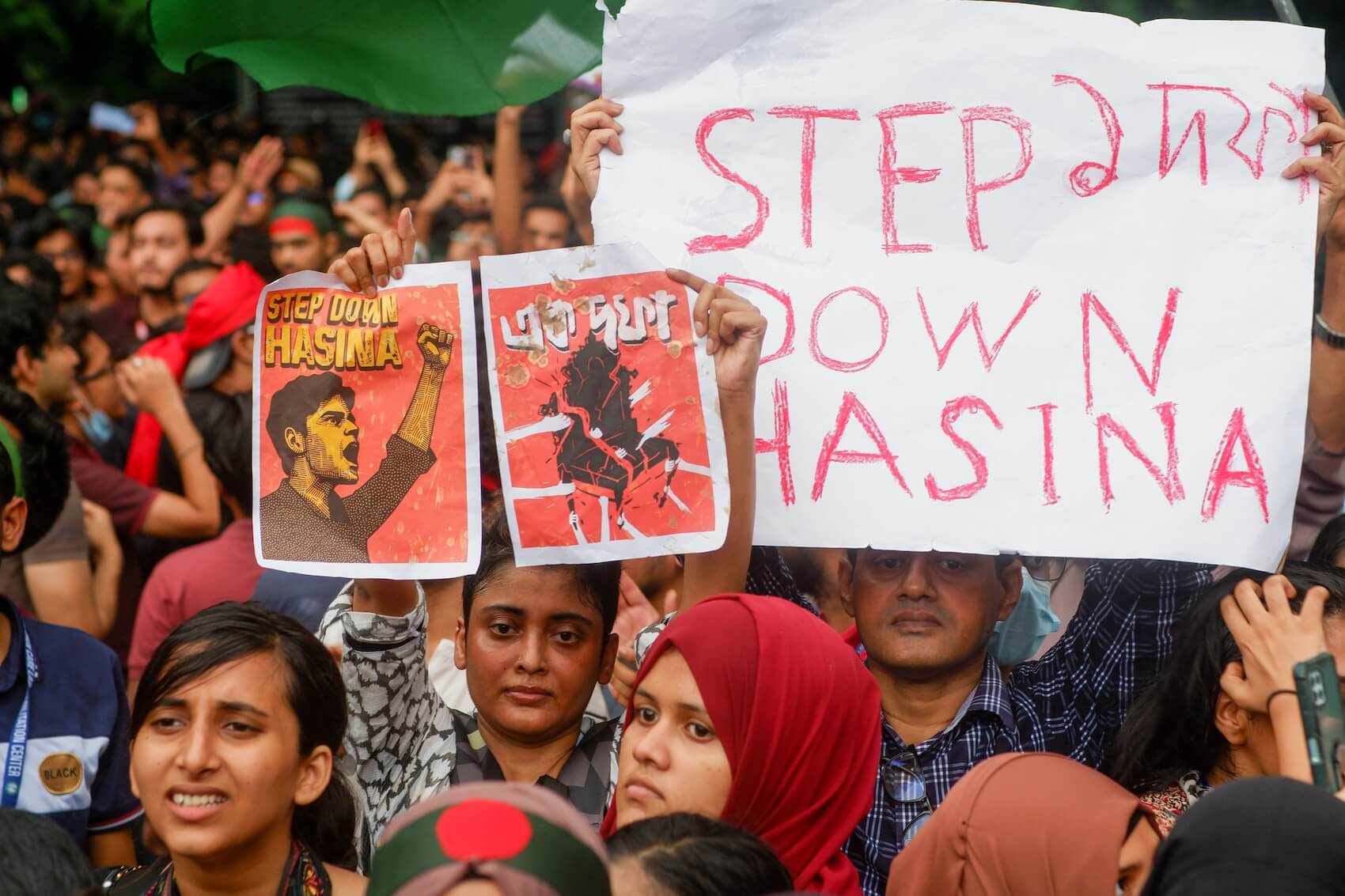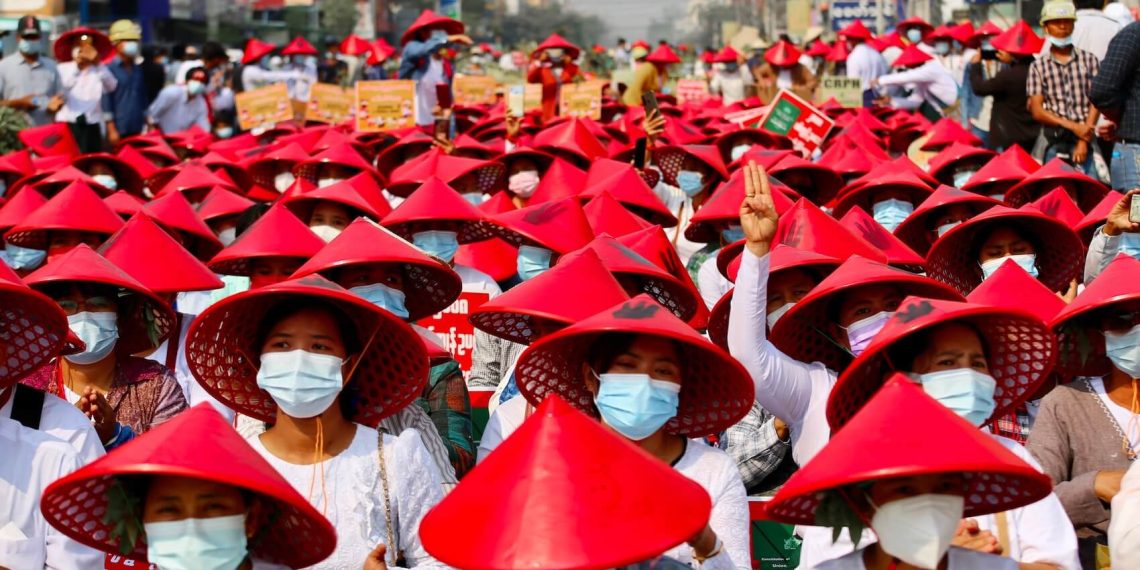Dr. DB Subedi highlights how majoritarian populist politics in South and Southeast Asia marginalizes minorities by leveraging identity politics and ethno-religious narratives. He underscores how populist leaders, from Myanmar to India, utilize state apparatuses to consolidate power, often legitimizing exclusionary policies and fostering polarization. With examples like Hindu nationalism in India, Buddhist nationalism in Myanmar, and Islamist populism in Bangladesh, Dr. Subedi examines how these movements exploit historical grievances and global populist trends while adapting them to local contexts. His analysis sheds light on the fragile state of pluralism and democracy in these multicultural societies.
Interview by Selcuk Gultasli
Dr. DB Subedi, a distinguished lecturer in Peace and Conflict Studies at the University of Queensland, Australia, delves deeply into the dynamics of majoritarian populist politics in South and Southeast Asia in an insightful interview with the European Center for Populism Studies (ECPS). Drawing from his extensive academic expertise, Dr. Subedi examines how populist leaders in the region leverage identity politics and state apparatuses to marginalize minorities and consolidate power, often at the expense of democratic institutions and pluralism.
In the interview, Dr. Subedi sheds light on how the historical, cultural, and political landscapes of post-colonial South and Southeast Asia have created fertile ground for nationalist and religious populist ideologies. He highlights the role of religion, ethnicity, and national identity in shaping these populist movements, often leading to the exclusion of minorities and the reinforcement of majoritarian dominance. The cases of India, Myanmar, Sri Lanka, and Bangladesh serve as pivotal examples, with each showcasing how populism adapts to local contexts while drawing on broader global populist trends.
Dr. Subedi also explores the economic underpinnings of populism in the region, emphasizing the interplay between economic inequality, globalization, and populist rhetoric. He points out that while globalization has lifted millions out of poverty in Asia, it has simultaneously deepened economic divides, creating grievances that populist leaders exploit to craft exclusionary narratives.
Furthermore, the discussion extends to the intersection of nationalism and populism, where Dr. Subedi identifies the trend of leader-centric politics replacing traditional party-led systems. This shift has enabled authoritarian populist leaders to manipulate institutions, bypass democratic norms, and entrench their authority. The examples of Narendra Modi in India, Rodrigo Duterte in the Philippines, and the Rajapaksa brothers in Sri Lanka illustrate how such leaders use religion and identity to legitimize their power while marginalizing dissenting voices and minority groups.
The interview provides a comprehensive understanding of how majoritarian populist politics operates in South and Southeast Asia, offering valuable insights into its implications for democracy, social cohesion, and the region’s broader political landscape. Dr. Subedi’s analysis serves as a critical lens through which to examine the challenges posed by populism in multicultural societies.

Here is the transcription of the interview withDr. DB Subedi with some edits.
The Roots of Populism: Religion, Identity, and Authoritarianism in South and Southeast Asia
Professor Subedi, thank you very much for joining our interview series. Let me start right away with the first question. In the context of South and Southeast Asia, what historical, cultural, and political factors have contributed to the rise of nationalist and religious populism, and how do these dynamics align with authoritarian populism to shape contemporary political narratives?
Dr. DB Subedi: That’s a very important question. When we talk about populism in South and Southeast Asia, to understand the overall dynamics of populism, we need to examine the historical context of post-colonial state formation in this region.
Religion, culture, and national identity have always been contentious issues in South and Southeast Asia. From the time of post-colonial state formation, for example, the role of Islam in Pakistan and Indonesia was heavily debated. Similarly, in Sri Lanka, religion has always been central to defining the majoritarian identity, and this has been deeply contested by minority groups. These dynamics are common across other regions as well.
Religion, history, and culture collectively define the social identity of one group of people, but at the same time, the same applies to minority groups. This creates a form of social polarization. Over time, populist leaders have tapped into these polarizations, mobilizing them to construct and define their own bounded political communities, which they then appeal to, while pursuing populist political narratives, ideas, and policies. The question of religion is particularly central in this regard.
This has also translated into various political discourses, such as the formulation of political ideologies and policies, where religion has often been both a contentious and central element. Countries like Bangladesh, Sri Lanka, and Pakistan are key examples, and we see similar instances in other parts of South and Southeast Asia.
The historical context of nation-state formation, the creation of national identity, and the manipulation of collective identities have become key features in defining populism in this region, both in the past and to a large extent in the present. For instance, the first wave of populism in South and Southeast Asia was led by national heroes—what we might call the nationalist leaders of independence movements. Not all of them, of course, but some of these founding fathers of modern nation-states had populist elements in the way they defined national identities, often at the cost of excluding others and mobilizing specific constituencies.
If you like, we could see these leaders as the first generation of populist figures. But times have changed. Over the past 50–70 years, if we look back to the 1950s and 1960s, there have been different waves of populism in this region. However, religion and national identity continue to play a crucial role in defining populist movements in South and Southeast Asia.
The Role of Economic Inequality and Globalization in Driving Populism
What role do economic grievances, inequality, and globalization play in fueling nationalist and religious populism in South and Southeast Asian countries?
Dr. DB Subedi: That’s another very important question. Earlier, I mostly discussed the cultural aspects of the rise of populist politics in this region. However, economic factors also play a significant role. Economic inequalities—both within and between ethnic groups, at national and sub-national levels—are key drivers of grievances. These inequalities often fuel resentment toward groups perceived as affluent or privileged within the community.
Inequality has consistently been a major issue shaping populist movements. For instance, in the 1980s, agrarian populist movements in parts of India were largely driven by economic grievances. Similarly, economic inequalities played a central role in mobilizing support for former Prime Minister Thaksin Shinawatra in Thailand. In this sense, inequality has always been a central issue in the rise of populism.
Globalization is another critical factor. When addressing inequality, populist rhetoric often targets political elites at the national level, but it frequently extends to external actors, such as multinational corporations and proponents of neoliberal policies, who are portrayed as the "enemies of the people." Economic grievances stemming from globalization provide fertile ground for populist narratives.
In the contemporary wave of populism, almost all populist leaders in the region have proposed ambitious and transformative economic policies aimed at redistribution. However, these agendas have often failed, with many populist leaders losing power after an average of 4–5 years.
In Asia, the role of globalization is complex. Unlike the "losers of globalization" thesis commonly seen in Western Europe and the US, where certain groups are left behind, globalization in Asia has largely benefited many countries. For example, the globalization of production industries has led to the relocation of manufacturing from the Global North to countries in the Global South, such as India, Vietnam, Malaysia, and Indonesia. This shift has contributed to economic growth and lifted many people out of extreme poverty.
However, this growth has been accompanied by rising inequality. While a segment of the population has profited greatly, the majority have seen only incremental improvements, leaving systemic economic inequality intact. This dynamic fuels public grievances and provides populist leaders with a platform to craft their narratives and agendas.
In this sense, globalization in Asia acts as a double-edged sword. On one hand, it creates opportunities for populist leaders to exploit growing inequality and public frustration, leading to anti-government and anti-establishment protests that propel populist figures to power. On the other hand, globalization has delivered tangible benefits to many in Asia, making the relationship between globalization and populism more ambiguous and requiring further exploration.
The Impact of Populist Nationalism on Marginalized Communities

celebration of VHP – a Hindu nationalist organization on December 20, 2014 in Kolkata, India. Photo: Arindam Banerjee.
How do nationalist and religious populist ideologies intersect and manifest in countries like India, Bangladesh, Myanmar, and Sri Lanka, shaping the broader sociopolitical landscape, and what are the implications for marginalized communities across Hindu-majority, Muslim-majority, and Buddhist-majority contexts in South and Southeast Asia?
Dr. DB Subedi: When we talk about the intersection of nationalism and religion, we should first look at the interface between ethnicity and religion, in Asian countries, because religion and ethnicity are deeply intertwined in many Asian countries. Take Sri Lanka, for example, where the majority of Sinhalese follow Buddhism, and as a result, historically, since the colonial period and in the post-colonial state formation, Sinhala Buddhism has become a dominant ideology. Sinhala Buddhist leaders of the past, and even more recently, have mobilized that ideology to define their majority political constituency.
We can say similar things about India. India is vast in terms of geography, ethnicity, caste, and so on. Even today, Hindus form the majority population, which provides political parties like the Bharatiya Janata Party (BJP) leverage to pursue Hindu nationalist politics both at the center and in the regions. In other words, the intersection of ethnicity and religion constructs the collective social identity of the people, providing leverage for political parties and populist leaders to define their bounded political communities, which they mobilize in their populist politics. One example is the populist nationalist politics of the BJP and its current Prime Minister, Narendra Modi, who many have analyzed as a Hindu nationalist and populist leader.
You can see similar dynamics in Bangladesh, where Islam and politics go hand in hand, and ethnicity obviously comes into play. In the case of the countries you mentioned—Sri Lanka, India, Bangladesh, and Myanmar—the majoritarian ethno-religious identities of the majority populations have always been central features in attempts to homogenize national identities.
This process of homogenization has been deeply contested by minorities in countries like Myanmar or India, where Muslim minorities, along with secular and liberal-minded political leaders and parties, contest this idea. Similar patterns are evident in Thailand, where the homogenization of national identity, based on Thai national identity drawn primarily from Buddhist culture and religious identities, is contested by other minorities.
As a result, there are multiple effects on the national polity, both from a populist and nationalist point of view. One major implication of this political dynamic is that in most Asian countries, nationalism often hosts populism. In other words, populism travels alongside nationalism in most Asian countries. Of course, the role of religion is present, and we can discuss religious populism separately. However, one prominent feature across the region is populist nationalism.
In terms of policy and political outcomes, minorities have suffered, as this form of politics often shares exclusionary characteristics similar to populist politics seen elsewhere, particularly in Western Europe and North America.
Power Consolidation and Minority Exclusion in South Asia
To what extent do nationalist and religious populist leaders in Buddhist, Hindu, and Muslim-majority countries leverage identity politics and state apparatuses to consolidate power, legitimize violence, and exclude minorities, and how do institutional and cultural narratives in post-colonial South Asia justify and sustain these populist-authoritarian practices?
Dr. DB Subedi: That’s another very good question. It actually points to some of the issues I mentioned in my earlier response, particularly the interplay between religious identity and national identity. What we have seen most recently across Asia is that populist leaders have frequently referred to the blending of religious and national identities in these countries to define their sociopolitical landscapes.
Having said that, we should also acknowledge that Southeast Asia and South Asia are vast regions, with diverse sociocultural and sociopolitical contexts, as well as differing historical and contemporary dynamics. These variations shape the realization, aspiration, and respect for pluralism and democracy in this region. Therefore, while identifying common trends, we must be cautious not to overgeneralize.
Despite these differences, one commonality across these countries is the centrality of leaders in shaping the political landscape. In the past, political parties held this central role. However, with the rise of authoritarian, populist, and nationalist politics—from the Rajapaksa regime in Sri Lanka to Sheikh Hasina in Bangladesh, Aung San Suu Kyi in Myanmar, Hun Sen in Cambodia, and Rodrigo Duterte in the Philippines—we have seen strong and powerful leaders dominating the political sphere.
This shift toward leader-centric politics has been a significant trend across South and Southeast Asia. Leaders like Narendra Modi in India connect directly with their followers, often bypassing institutional processes, by mobilizing cultural, religious, or national identities. Similarly, Duterte in the Philippines sought direct engagement with the public, frequently circumventing institutional frameworks.
Populist leaders often appeal to the "will of the people" to justify and consolidate power. They use this direct connection with their political constituencies, defined by religious, national, or ethnic identities, to legitimize their authority. This raises the question: where do institutions stand in this process?
Institutions do matter, and in Asia, as elsewhere, populist leaders often come to power through elections, no matter how free or fair those elections might be. The presence of democratic institutions, even minimally, has been a prerequisite for populist leaders to rise to power. However, once in power, these leaders employ various tactics to manipulate, dismantle, or reform existing political and democratic institutions to consolidate their authority.
For example, in Sri Lanka, the populist-nationalist government of Gotabaya Rajapaksa and his predecessor, his brother Mahinda Rajapaksa, pushed for constitutional reforms to concentrate power in the presidency. Similarly, in the Philippines, Duterte passed an anti-terrorism law that weakened civil society organizations, particularly those engaged in peacebuilding in conflict-affected areas like Mindanao. Institutional manipulation and re-engineering of democratic structures have become common strategies for populist and authoritarian leaders to sustain their hold on power.
Contrasting Populisms: Nationalist Narratives in Asia and the Global West

How does the rise of nationalist and religious populism in Asia compare with similar movements in the global West in terms of discourse strategies and mobilization methods, and to what extent are these movements influenced by global populist trends while adapting international narratives to local contexts?
Dr. DB Subedi: Interesting question. Asia, especially South and Southeast Asia, is a unique region in terms of understanding populism. It is unique because, unlike in the West, in South and Southeast Asia, we have seen populist movements and populist styles of politics that involve different varieties of populist movements. There isn’t one singular form of populism.
As I mentioned earlier, nationalism has often hosted populism in Asia, and the two frequently go hand in hand. This is because questions of national identity, ethnicity, and religion are central to defining both nationalist and populist movements. While there are key differences between the two, most populist leaders in the region also embody elements of nationalism to some extent. Narendra Modi is an example, and you can observe similar trends in Thailand, Myanmar, and Indonesia, among others.
This is a unique feature of populism in Asia. However, across the region, we should be cautious when interpreting or explaining populism with the same degree of intensity. By "degree of intensity," I mean that in some cases, when populism intersects with nationalism, it manifests as what I would call "soft populism."
When I say "soft populism," the overall political manifestation or style of a particular populist leader might appear nationalist but incorporates populist orientations or elements. Imran Khan’s politics in Pakistan is a recent example. In Bangladesh, politics under Sheikh Hasina was mostly authoritarian, but in her later years in government, she also played the nationalist card while implementing redistributive economic policies, which had populist undertones. She reached out to Muslim voters and her support base using a populist style of politics. Similar examples can be observed elsewhere.
Soft populism can involve a strong leader or political party that is primarily nationalist or authoritarian but includes populist elements. On the other hand, there are also cases of "hard populist" governments and leaders in the region. Rodrigo Duterte in the Philippines is a prime example, as is Thaksin Shinawatra in the past in Thailand. These leaders represent a more pronounced form of populism.
This distinction—between soft and hard populism—is one of the differences between populism in Asia and the populist leaders in Western Europe and North America. The phenomenon in Asia is shaped by the region’s distinct history of post-colonial state formation and its sociopolitical landscape of collective identity and politics.
In this sense, soft populist politics in South and Southeast Asia often appears as an extended form of identity politics.
Finally, when we compare similarities and differences, we observe that during the 1980s and 1990s, there was a rise in left-wing populism. Interestingly, in the last 10 to 15 years, we have seen the emergence of populism that looks more exclusionary, sharing certain elements of right-wing populism seen elsewhere. However, there are still a few examples of left-wing populism in this region.
Comparing Buddhist, Hindu, and Islamist Populist Policies in South Asia
In what ways has Buddhist nationalism in Myanmar influenced the state’s policies towards minorities, and how does it compare to Hindu nationalism in India or Islamist populism in Bangladesh?

Dr. DB Subedi: All these countries have different histories and contexts of post-colonial state formation, although one similarity is that all three countries were colonized. So, they are post-colonial nations with a history of colonial rule. At the same time, they are multicultural countries with both ethnic and religious majorities as well as minorities.
In Myanmar, for a long time, when the military junta was in power—and they remain in power today—they have consistently used ethno-religious nationalism as a key strategy and ideology for ruling the country. This trend has been especially pronounced over the last few decades. When the military first came to power, they seemed to adopt a different kind of socialist policy, and the religious and ethno-religious dimension was not as prominent at that time. However, over time, there has been a growing trend of mobilizing the sentiments of Theravada Buddhist Burmese, which has been deeply contested by other ethnic and religious minorities.
One consequence of this trend has been the subordination and marginalization of ethnic minorities, which has contributed to ongoing civil wars in Myanmar for decades.
In India, the situation is quite different. The BJP came to power relatively recently, whereas before that, the Indian National Congress, which was more oriented toward pluralism and liberal policies toward minorities, held power. Under the current government, however, Hindu nationalist policies have led to the introduction of certain citizenship laws and other policies that discriminate against Muslim minorities.
Similar trends can be observed in Sri Lanka and Bangladesh as well. In a nutshell, minorities have often become victims of majoritarian, exclusivist politics when such ideologies are in power.


